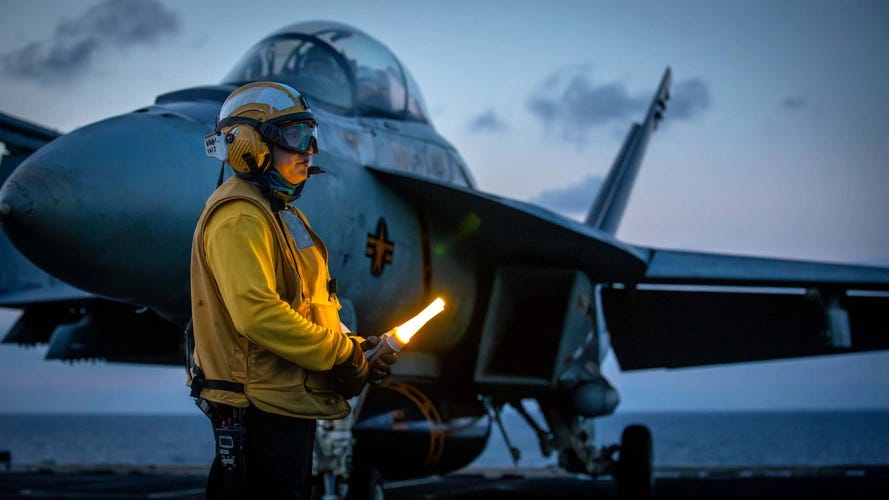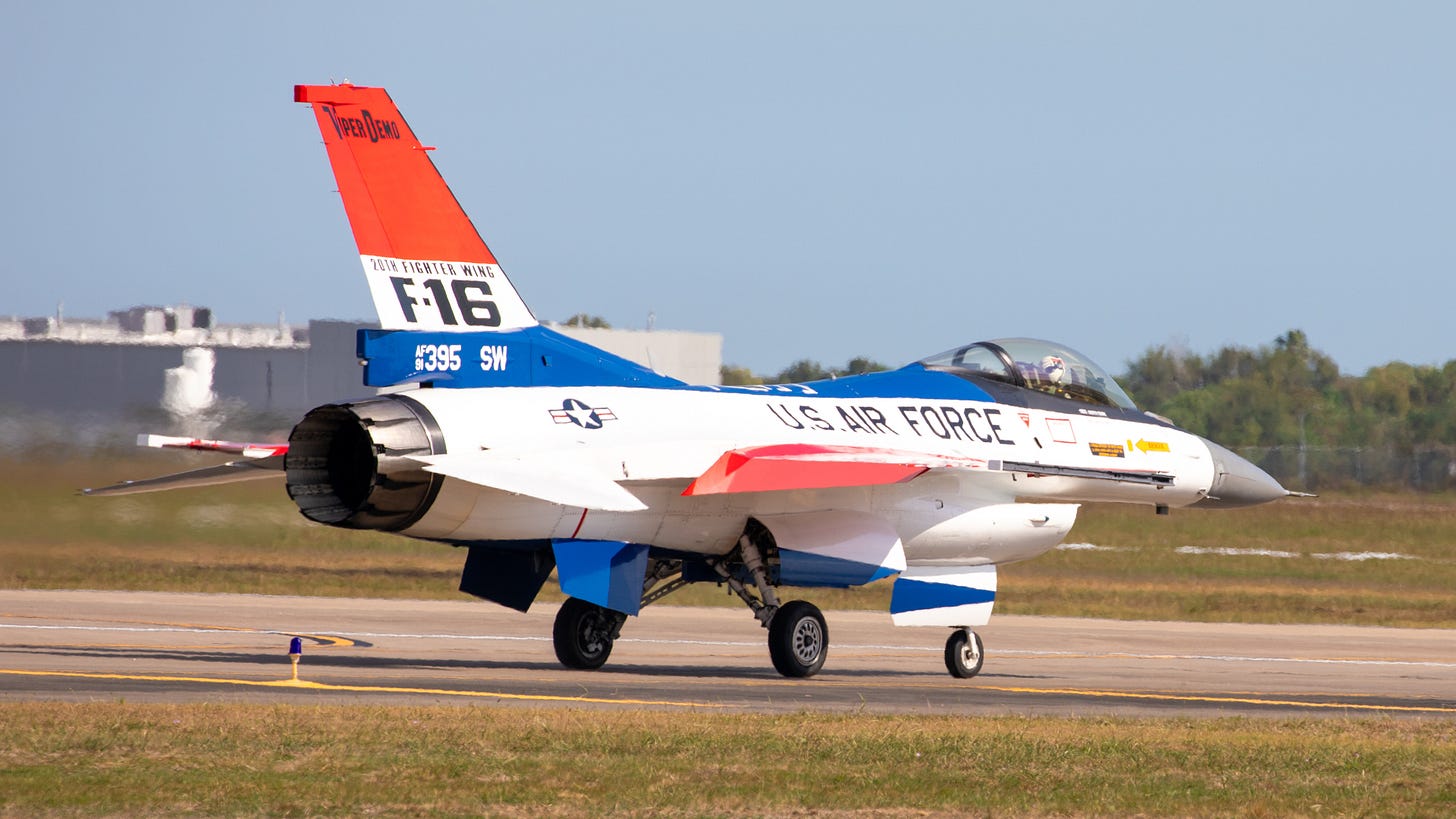Carrier Power and Moonshots: Ford Heads South as Saturn I Rises in History
From the USS Gerald R. Ford’s surge into the Caribbean to the first Saturn I launch that set humanity on a path to the Moon—this week, American air and space power take center stage.
“The USS Gerald R. Ford represents the pinnacle of American naval aviation—its deployment to the Caribbean underscores our ability to project power, deter threats, and support partners anywhere in the world.”
— Rear Adm. Gregory Huffman, Commander, Carrier Strike Group 12
Mission Briefing
The U.S. Navy’s latest deployment has sent the newest flattop in the fleet — the USS Gerald R. Ford (CVN-78) — along with its full carrier strike group into the waters of the Western Hemisphere under U.S. Southern Command’s area of responsibility.
According to Pentagon spokesman Sean Parnell, the move — directed by Secretary Pete Hegseth — is aimed at supporting the President’s directive to “dismantle Transnational Criminal Organizations (TCOs) and counter narco-terrorism in defense of the Homeland.”
Key details:
The strike group is currently in the Mediterranean Sea, with the carrier recently spotted in Croatia, and is estimated to reach the Caribbean region in about 5–7 days.
This deployment supplements a recent uptick in U.S. Air Force bomber operations: two B-1Bs flew long-range training sorties across the Caribbean Sea toward the Venezuelan coast on 23 October.
Specialized ISR/communications assets — including the Army’s ARES, ARTEMIS and ATHENA jets and the Air Force’s E-11A BACN aircraft — have also been assigned to the SOUTHCOM region.
Why this matters for aviation and strike-power:
The Ford strike group brings sustained maritime air-intercept, strike-fighter and long-range ISR capability to a region not normally serviced by a full carrier wing. That means the U.S. can generate a higher tempo of air operations, rapid response from the deck, and full integration of aircraft types.
The timing aligns with drug-trafficking and “narco-terror” concerns, but the deployment also sends a broader strategic signal: projecting carrier-based airpower into the Caribbean as a deterrent posture.
For aviators and planners: launching from a carrier in the Caribbean alters mission sets — maritime strike, air-defence picket, airborne early-warning overlays, tanker support — all with a forward sea-based footprint rather than a fixed land base.
Considerations moving forward:
Once on station, the strike group’s flight operations tempo and integration with existing SOUTHCOM and Navy/Marine assets will be closely watched.
Monitoring how air-wing sorties, carrier-based tankers, and surface-ship air-defence assets mesh with land- and sea-based operations will give insight into evolving U.S. doctrine in the Caribbean littoral.
The arrival of such a large asset might provoke regional responses — from increased air-activity by adversary states to shifts in smuggling-network behaviours. Pilots and planners should be alert for new airspace restrictions, maritime interdiction coordination, and joint/coalition training opportunities.
In short: the Ford strike group’s redeployment marks a sharpened U.S. air-and-sea posture in the Western Hemisphere. For those in military aviation, it’s a reminder that the carrier air wing remains a powerful, mobile force-projection tool — not just in major theatres, but in the littoral zones closer to home.
Here’s a further breakdown of what daily operations by the USS Ford could look like:
1. Early-morning launch sweep & maritime air-patrol
Sunrise kick-off: A set of strike-fighters (eg. F/A-18E/F or F-35C) launch from the deck ~30 minutes after dawn, to establish dawn radar/optical coverage extending east-west over known trans-shipment routes (e.g., eastern Caribbean corridor toward Venezuela/Colombia).
Concurrent airborne early-warning (AEW) platforms (eg. E-2D Hawkeye) orbit upwind, establishing a picket of ~200-300 nm radius from the carrier.
Tanker support (carrier-borne KA-6 type or C-2/C-130 logistic variant) scheduled to refuel the first sortie wave mid-morning, enabling longer on-station time.
Mission profile: maritime strike-fighter + targeting pod + ISR hand-off to P-8/MPA assets; the strike fighters will orbit in “ready-hold” near the carrier for rapid reaction, then push outbound along arcs to interdict/monitor suspect vessels.
By mid-morning (~3-4 hrs after launch) transition to deterrence posture: fighters patrol “stooging” lanes (pre-defined holding orbits) which can move to intercept quickly on cue.
2. Mid-day ISR/air-refuel & partner-integration flights
Mid-day sorties shift emphasis toward longer-duration ISR: unmanned-air-systems (MQ-9 Reaper) or carrier-based UAVs fly out to monitor go-fast smuggling boats, with support of the carrier’s organic air wing.
Tankers launch ~1100-1200 local time to re-fuel airborne ISR/strike assets, enabling station time through the heat of the day (critical in the Caribbean region’s environment).
A- and C-model aircraft from the wing may integrate with land-based partner air/sea units (from Latin American navies/coast guards) for joint patrol segments.
Strike-fighters may rotate in for shorter “sprint” sorties (1.5-2 hrs) to maintain alert-status while longer loops are flown by ISR/UAVs.
3. Late-afternoon high-readiness sortie surge
Late-afternoon (roughly 1500-1700 local) is a prime slot for surge–launch: carriers typically launch another wave of fighters/tankers/AEW for peak intercept potential before dusk. The idea: exploit the littoral shadows and lower sun angles to enhance detection of small craft, subsurface wake signature, etc.
For the Ford-group mission: an expedited sortie pattern might see fighters launched on ~90-minute alert cycles, ready to scramble on short notice — particularly for suspected narco-trafficking vessels detected by ISR or partner forces.
Helicopter detachments (MH-60R/S) may deploy from the carrier for maritime surface reconnaissance / fast-boat interdiction tasks, accompanied by carrier-air-wing aircraft escorting.
In some cases, the sortie pattern could include stand-by strike packages (fighters + SUW missiles or naval air-to-surface missiles) ready to execute on cue if hostile action is confirmed.
4. Night-ops / dusk-to-night transition sorties
Once twilight begins, launches may shift to night-capable jets with targeting pods and FLIR/IR systems for interdiction of vessels attempting smuggling under cover of darkness.
AEW/ISR remains critical: E-2D and possibly allied land-based AWACS maintain picket orbit; UAVs continue loiter.
Tankers likely launch earlier morning for longer legs; night launches often include pre-fueling to ensure a solitary sortie can carry outbound, on-station, and return without refuel depending on the threat.
Night sortie pattern may be less frequent than day, but higher readiness: fighters may be kept on deck in ready-rooms with engines running, 15-20 minute launch-window.
5. Organic carrier wing rotations & maintenance/reserve cycles
The carrier will likely use a cyclic sortie-schedule: e.g., two or three waves per day for the main fighter fleet, with one wave reserved for high-alert reaction, another for routine patrol, and a third for training/partner drills.
Maintenance cycles: After each sortie wave, a focused down-time block (~1-2 hrs) allows armaments resets, fuel/resupply, pilot debrief/re-brief, and sortie-planning for the next wave. In this Caribbean deployment, tempo may be somewhat lower than a high-intensity combat theatre, but still brisk due to the dual role of interdiction + deterrence.
Alert assets: A small number of fighters (~2-4) remain on “deck cycle” ready to launch within 5-10 minutes for air-defence, maritime-strike or MEDEVAC/CSAR tasks.
6. Integration with maritime assets & land-base coordination
The sortie patterns will be interwoven with land-based patrol aircraft (e.g., P-8 Poseidon, maritime RPAs), partner-nation assets, and Navy surface/undersea vessels. The carrier airborne assets will provide rapid reaction capability and strike option that land-based assets can’t match in littoral vs open-ocean hand-off.
Strike-fighters might carry mission-sets such as: “escort/co-ordinate with P-8 until hand-off to carrier wing,” or “launch from carrier, rendezvous with partner destroyer’s UAV/ship radar net to prosecute identified target.”
Tankers and AEW platforms will sustain links between the carrier and land-based platforms, enabling continuous connectivity for maritime domain awareness.
7. Key factors & environmental/end-game modifiers
Small-craft detection: The Caribbean littoral includes many islands, shallow water, and complex surface signatures. Sortie patterns will factor in slower transit legs (for fighters waiting for targets nearer coasts) and higher loiter time for ISR/UAVs.
Weather/climatology: Tropical weather means afternoon thunderstorms, squalls and lower-visibility. Sortie scheduling will often front-load longer legs in the morning, leaving the afternoon for shorter patrols or reactive launches.
Political/region-specific rules of engagement (ROE): Since the mission emphasizes counter-narco/“narco-terrorism,” sorties may include rapid-reaction strike packages, but clearance/targeting will be stricter than major-combat theatres. This influences sortie selection (for example, more Patrol/ISR flights than heavy strike flights until legal/partner clearance).
Deterrence vs interdiction balance: Because the carrier is also signalling presence, many sortie patterns will be visible: high-op tempo, well-publicised fly-aways, maybe combined partner drills. The sortie number may be higher than normal for a pure counter-smuggling mission — partly for show of force.
This Week in Aviation History
The Rocket That Paved the Way to the Moon
27 October 1961 — Cape Canaveral, Florida
At exactly 15:06:04 UTC (10:06 a.m. EST), a thunderous roar rolled across Florida’s Space Coast as the first Saturn C-1 rocket—later known as the Saturn I—lifted off from Launch Complex 34. Designated SA-1, this was the maiden flight of the booster family that would ultimately carry humanity to the Moon.
This inaugural launch was a test of the Saturn’s first stage only; its upper stages were inert dummies. Just under two minutes after liftoff, the rocket’s inner four Rocketdyne H-1 engines shut down, followed moments later by the outer four. From there, the 162-foot-tall vehicle arced gracefully along a ballistic trajectory over the Atlantic.
Despite its simplicity, the test was an overwhelming success. The Saturn C-1 reached 84.8 miles (136.5 km) in altitude, a top speed of 3,607 mph (5,805 km/h), and splashed down 214 miles (345 km) downrange after a 15-minute flight—a near-perfect performance for America’s newest heavy lifter.
The S-I first stage, built by the Marshall Space Flight Center in Huntsville, Alabama, was an ingenious hybrid of existing hardware. Its core was a Jupiter rocket liquid-oxygen tank, surrounded by eight Redstone tanks—half filled with kerosene fuel (RP-1), half with liquid oxygen. Each of the eight H-1 engines produced 165,000 pounds of thrust, for a total of 1.32 million pounds at launch.
The Saturn’s upper stages were mockups loaded with water for ballast—90,000 pounds in the S-IV and 100,000 in the S-V. Even so, the rocket tipped the scales at 925,000 pounds (419,000 kg), making it the largest launch vehicle ever built at the time.
This modest first flight proved that Wernher von Braun’s “cluster of clusters” concept worked—and it set the stage for the mighty Saturn V that would follow just a few years later. The Saturn I’s success was not just an engineering milestone—it was the first confident step on the path that would lead humankind beyond Earth.
In Case You Missed It
Here’s a deep dive on the Lightning:
Photo Outlet
Every issue of Hangar Flying with Tog gets you a free image that I’ve taken at airshows:
Feel free to use these photos however you like, if you choose to tag me, I am @pilotphotog on all social platforms. Thanks!
Post Flight Debrief
Like what you’re reading? Stay in the loop by signing up below—it’s quick, easy, and always free.
This newsletter will always be free for everyone, but if you want to go further, support the mission, and unlock bonus content, consider becoming a paid subscriber.
Your support keeps this flight crew flying—and I couldn’t do it without you.
– Tog






